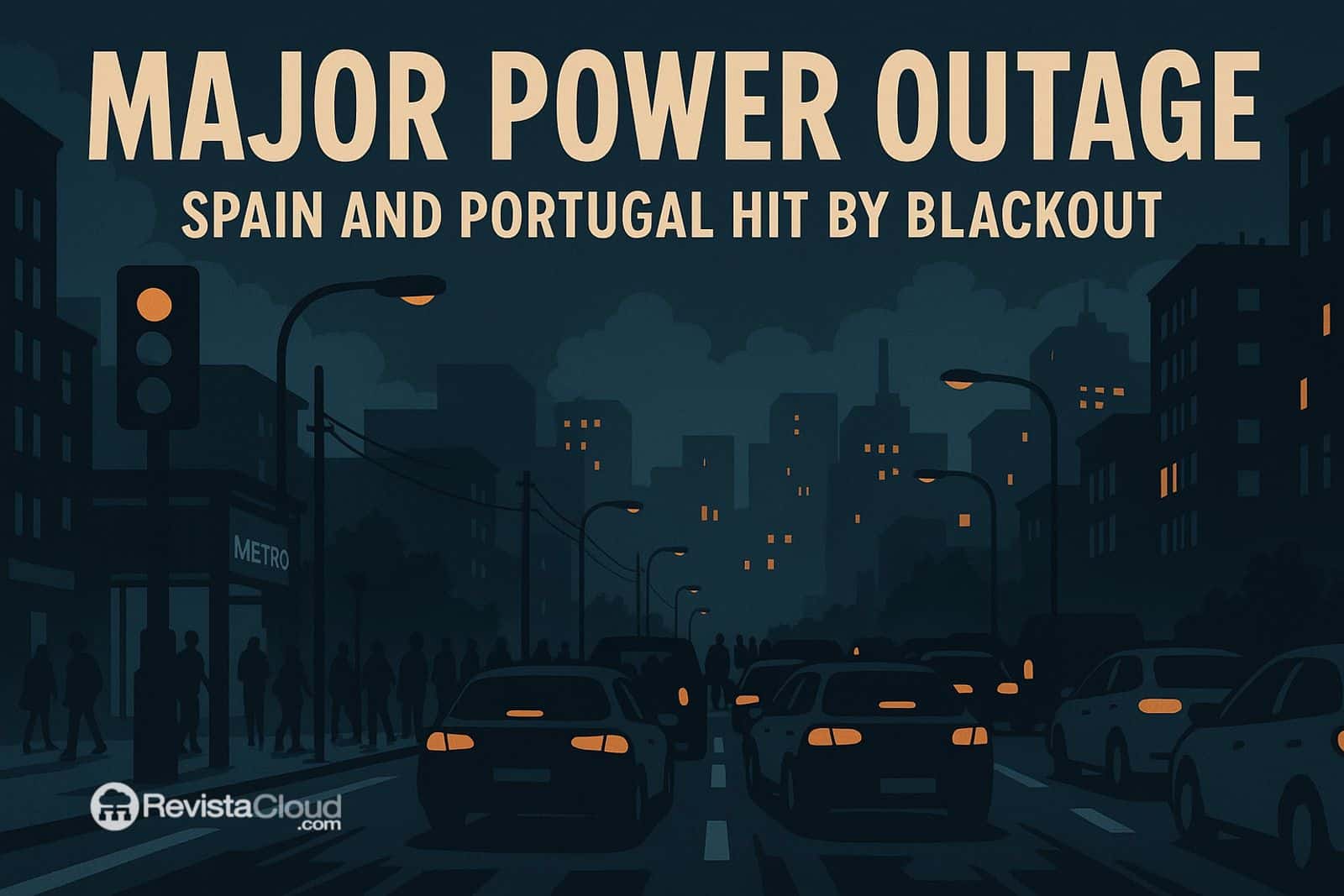The electrical collapse recorded this Monday in Spain, Portugal, and parts of southern France not only left millions of citizens without power; it also highlighted the fragility of critical infrastructures such as data centers, telecommunications networks, and essential digital services. In an increasingly interconnected world, the massive blackout has reignited the debate over technological resilience and the need to strengthen protective mechanisms against large-scale electrical incidents.
What Really Happened?
According to official statements by Red Eléctrica de España (REE), the electrical system of the Iberian Peninsula experienced a severe power fluctuation that led to the automatic disconnection of Spain and Portugal from the European electrical system. Subsequently, there was a massive loss of generation capacity, a double blow that caused the most significant blackout in decades.
Although investigations are ongoing, initial hypotheses suggest:
- A failure in primary generation, possibly linked to renewable energies or inactive backup systems.
- A cascade destabilization due to synchronization failures in the network.
- (At the moment, a cyberattack is ruled out).
These events highlight the high interdependence between distributed generation and dynamic control mechanisms in modern energy networks.
Data Centers: The Challenge of Operational Continuity
The blackout directly affected dozens of data centers in the Peninsula, forcing them to operate exclusively on uninterruptible power supply (UPS) systems and emergency generators. While most large facilities weathered the initial impact, there were brief outages in cloud services, corporate VPN failures, and latency issues in critical telecommunications networks.
The situation demonstrates that:
- UPS and generators must be properly sized to withstand outages longer than 4-6 hours.
- Dual power supply remains essential for Tier III and higher facilities.
- Active monitoring of regional electrical networks should be part of Business Continuity Planning (BCP) strategies.
Beyond the immediate impact, many data centers experienced thermal risks: if cooling systems do not receive enough power, server overheating can lead to irreversible failures.
Telecommunications Under Pressure
Major operators—Movistar, Orange, Vodafone, NOS—also suffered service drops for mobile and 5G across wide areas of Spain and Portugal. Although some backbone networks held up thanks to their protected infrastructure, numerous 4G/5G antennas ceased functioning when their backup batteries were depleted.
This fact underscores the need to:
- Extend energy autonomy for critical nodes.
- Reinforce power for towers and facilities during long-duration incidents.
- Prioritize recovery of emergency services in network restoration protocols.
In a context of growing dependence on mobile communications (digital health, emergencies, banking operations), service continuity becomes a factor of strategic national resilience.
The Structural Risk of Modern Networks
Today’s event shows that in ultraconnected systems like the current one, a single serious failure can propagate instability on national or continental scales. As Europe opts for greener and more distributed energy networks, the challenge of maintaining instant stability becomes even more complex.
Key takeaways from the blackout:
- Strengthen backup energy infrastructures at all critical nodes: data centers, telecommunications, hospitals.
- Improve “energy island” protocols that allow small cores to remain operational in the event of a massive disconnection.
- Automate failover to alternative sources in both energy and communications.
- Design realistic crisis simulations that prepare businesses and administrations for scenarios of prolonged blackouts.
A Warning for the Digital Future
If the blackout on April 28 shows anything, it’s that there is no digital transformation without energy and communications resilience. The security of our critical infrastructures must evolve at the same speed as threats and systemic challenges do. This requires investment, innovation, and, above all, a persistent risk awareness.
Today it was an electrical failure. Tomorrow it could be a climate failure, a cyberattack, or a combination of both. The challenge is no longer just growth, but ensuring that our digital infrastructure can withstand the unimaginable.

